The Church of the Nativity is the main reason for visiting Bethlehem for the millions of pilgrims that descend on the Holy Land every Year. It is one of the oldest churches in the world in which the Liturgical services are served. The very structure of the church is built above the cave itself which is the birthplace of Jesus Christ. The Church of the Nativity of Christ began to be built in 326 at the behest of Byzantine Emperor Constantine and his mother St. Helen, at the place of Christ’s birth, in Bethlehem.
In addition to the Temple of the Resurrection of Christ in Jerusalem (The Holy Sepulchre), the Church of the Nativity of Christ in Bethlehem is considered to be the most important Christian sanctuary. The foundation of this temple dates from the first centuries of Christianity. Origen writes that during his visit to Bethlehem in 220 AD, he saw the cave where Christ was born, as well as His crib. As the Christians were persecuted by the Roman authorities at that time, Emperor Adrian built a polytheistic temple dedicated to the god Adonis at the birthplace of Christ in order to prevent the pilgrimage of Christ’s followers. In the temple various polytheistic rites were performed.
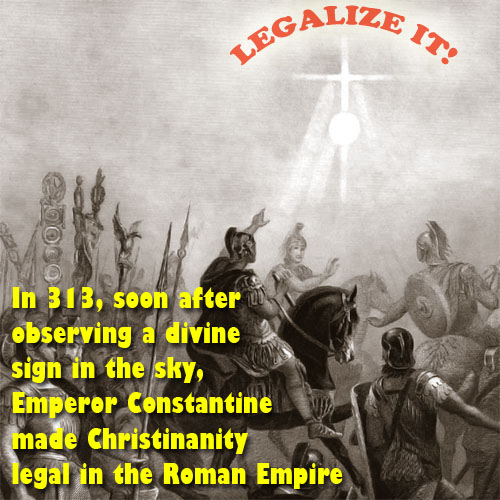
Christians gained the freedom of their religion in 313 AD. Byzantine Emperor Constantine, together with his mother Jelena, began the construction of a church at the place of Christ’s birth in 326 AD. The construction of the Church of the Nativity of Christ was completed in 333 AD. The cave in which Jesus Christ was born was expanded, an altar was erected, and an eight-sided building was erected above it all. The interior of the church was decorated with mosaics, marble columns, rich decorations and murals on the walls. Of these, floor mosaics remain in the main nave today.

Near the Church of Christ’s Nativity is a cave in which the Angel of God appeared to shepherds and communicated the gospel to them. During the 4th century it was decorated with mosaics and converted into a church, and later a monastery was built there. Today, this place is called the Shepherd’s Field and it houses the Greek Orthodox Church.
The Church of Christ’s Nativity went through stormy times, damage, fires, etc. Emperor Justinian rebuilt the church in about 526 AD. A mosaic of Christ’s birth was then erected on which the sages were also painted, and which is located on the facade above the main entrance. This mosaic saved the church during the Persian invasion of 614 AD. The Persian emperor Hozroya succeeded in conquering much of the territory from Byzantium including Bethlehem. The Persian warriors destroyed everything before them, and even the Church of the Tomb of Christ (Temple of the Resurrection of Christ-The Holy Sepulchre). However, they did not destroy the Church of Christ’s Nativity, precisely because of this mosaic.
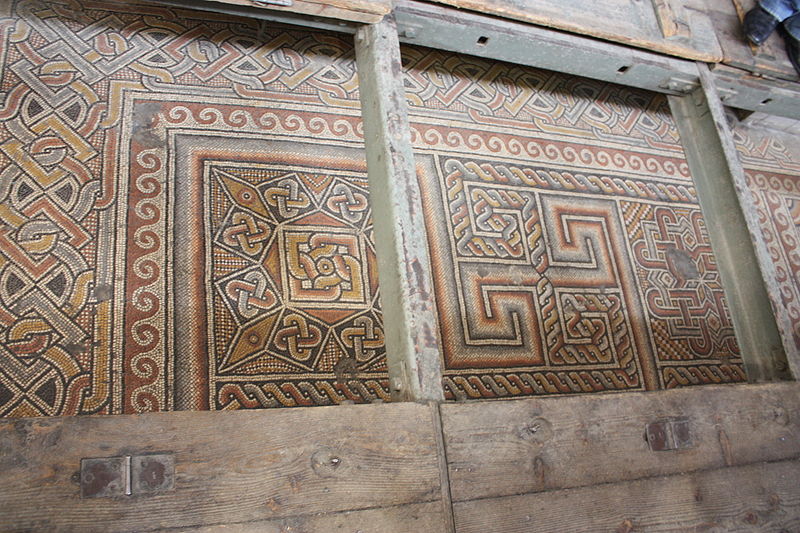
The Church of Christ’s Nativity is of a similar shape today, as it was in the time of Justinian and the Crusaders. It is located in the center of Bethlehem. There are three entrances to the temple. Two are built, so there is only one entrance, which the crusaders have built. Upon entering (discreetly), to the left, there is a Palestinian police station.
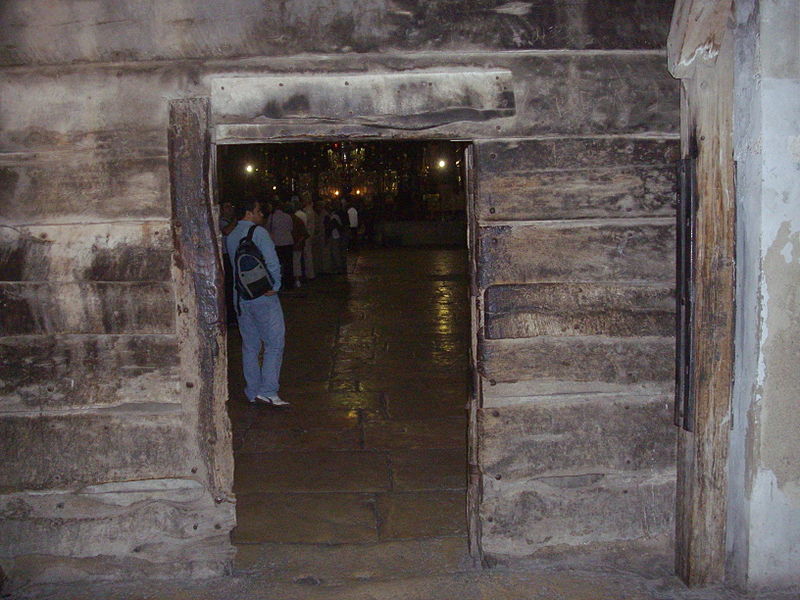
Upon entering the temple, one can notice the pillars (with painted saints), on the left and right, which are from Crusaders.
On the left is a door leading to the Church of St. Catherine of Alexandria, which was erected in 1882 by the Franciscans. Within this church are five caves. In one of them Blessed Jerome lived.
On the eastern part of the Church of the Nativity is an altar, belonging to the Greek Orthodox Church. The altar is enclosed by a large wooden iconostasis dating from 1764, which is decorated with icons and numerous oil laps.
On the left side of the altar is the Armenian church, which consists of two altars. One is dedicated to the Virgin and the other to the sages called the Altar of Kings. The Armenians believe that the sages left their horses there when they came to worship the little Christ.
To the right of the Orthodox altar is the Circumcision Altar, which belongs to the Greek Church.
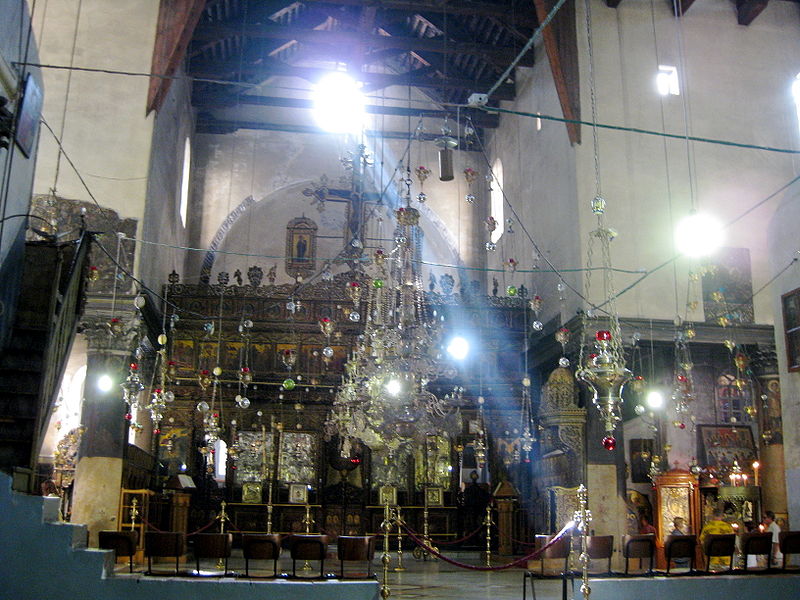
Below the Orthodox (Greek) Circumcision Altar is the entrance to the cave of Christ’s Nativity. At the entrance to the cave, on the left, there is a pillar with the icon of the (miraculous) Jesus Christ painted on the top. Descending down to the right of the stairs is the birthplace of Christ, a small altar was built there. The altar is adorned with a multitude of oil lamps and a six-pointed star is placed beneath it, indicating that the Savior of the world was born at that place. The star says: Hic De Virgine Marie Jesus Christus Natus Est – 1717, which means: Jesus Christ was born here of the Virgin Mary – 1717. The year carved means that the star was set that year, which disappeared in a mysterious way. October 12, 1847. The new one was only erected in 1852, and the inscription dates from the old one. Otherwise, the place of the Nativity of Christ is the responsibility of the Greek Orthodox Church.
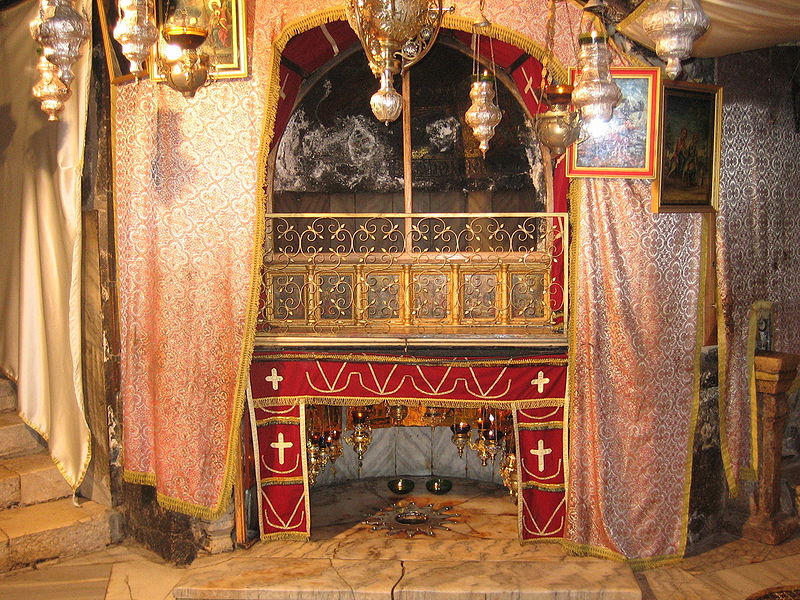
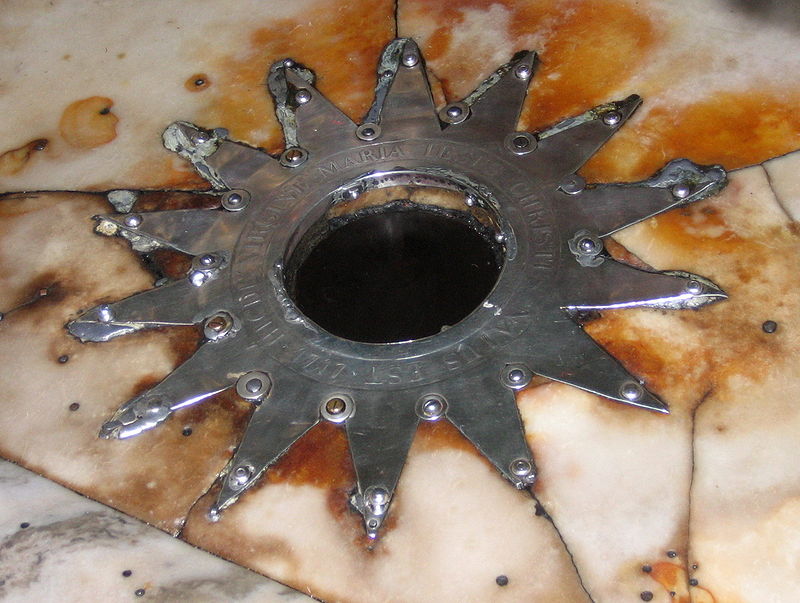
Across the place of the birth of Christ is the Chapel of the Nursery, that is, the place where Jesus is laid in a manger. In Jesus’ time, the manger was made of clay and not of wood (as some claim) but later the gilded manger was replaced and installed. Roman Catholics care for the Chapel of the Nursery.

Near the birth of Christ, there is the Milk Cave. In this cave, according to tradition, Joseph and the Virgin Mary and baby Jesus took refuge to spend the night. While the Virgin Mary was breastfeeding Christ, a few drops of milk fell from the breast of the Virgin on the white stone. Since then, it is considered to be medicinal. Many scrape off white stone dust and use it for various purposes. The Franciscan church was erected on this site in 1872. The church is also visited by Muslims.
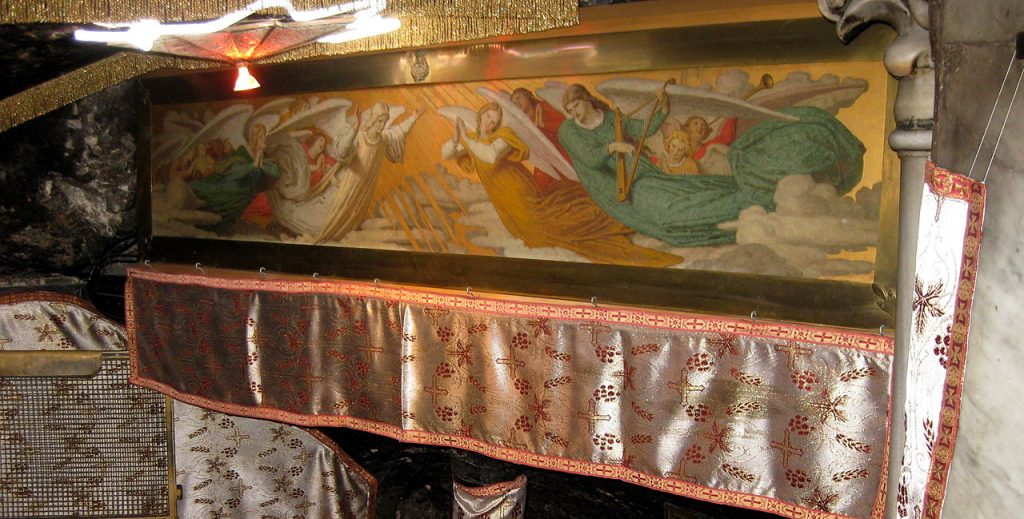
There are three churches in charge of the Temple of Christ’s Nativity: Greek, Roman Catholic, and Armenian. Each church has its part in the jurisdiction and all duties are regulated. In the Cave of Christ’s Nativity, only the Greeks and Armenians have the right to lithium, while Catholics are excluded. That is why Roman Catholics have in their jurisdiction the Chapel of the Nursery, in which only they can hold worship. Above the Birth Star, there are 16 oil-lamps. Four oil laps belong to Roman Catholics, while Greeks and Armenians each hold 6. The floor is swept by the Greek Orthodox and Catholics on different days, while the Birth Star is cleaned only by Armenians and Greeks.
Bethlehem Miraculous Icon of the Most Holy Theotokos

The icon of the Blessed Virgin Mary of Bethlehem is considered to be a miraculous icon that has healed many and answered many questions to believers. Her reputation is especially high in Palestine, not only among the Orthodox but also among Muslims.
In Bethlehem it is kept in a wooden quiver and stands on the wall a few steps from the entrance to the cave where Christ was born. The Bethlehem Godmother differs from all other icons that portray the Virgin in that she is smiling.
On classical icons, the Virgin Mary has a serious expression, and on this Bethlehem’s it is evident that her joy outweighs everything she was aware that she and her crucified son would suffer.

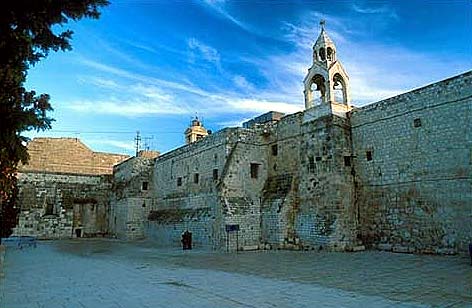
He is Risen